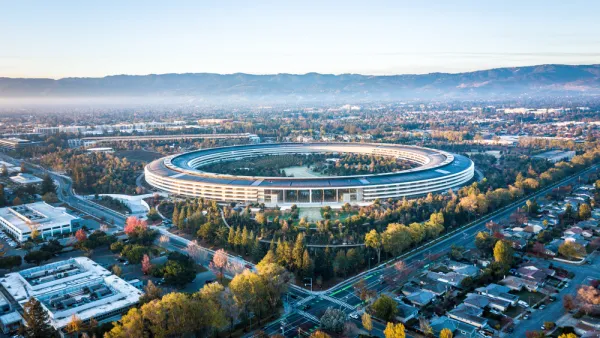The controversy over the recent ballot initiative known as Measure S has Los Angeles thinking: How can the city accommodate new housing supply without disenfranchising communities?

At a recent USC Price School panel, planners, developers, and advocates discussed how Los Angeles could plan for both more housing supply and improved neighborhood equity in the aftermath of the failed Neighborhood Integrity Initiative, which helped to ignite a citywide conversation about planning and growth.
Although the city recently committed to updating community plans on a six-year cycle, former Director of City Planning Gail Goldberg maintained that the community planning effort would be hindered by the lack of a cohesive, inspiring general plan—resulting in every community coming up with its own vision, and more opposition to new development.
"I would propose that if communities have no idea where things are going, or what the ultimate result is supposed to be, it's not an illogical response to oppose new projects," she argued. Moreover, a lack of transparency and accountability leaves them apparently without recourse: "If they worked and adopted a plan that they loved, would the council honor it?"
South L.A. community organizer Damien Goodmon added that the regional and local housing crises can be situated in the context of a global interest in speculative real estate that especially impacts underserved communities. "We're not building housing for people to live in; we're building housing for investment," he said.
Before we discuss whether we need more housing and where to put it, let’s talk about protecting our existing communities. Ultimately, that forces us to talk about the challenge of gentrification—the spatial expression of economic inequality.
Goldberg, too, stressed the need for a holistic approach to planning in her call for "a new way of doing community plans."
Community plans have to be about more than just growth. They are not only about where development goes and where it doesn’t go. Community plans have to talk about the quality of life in that community, and how we make sure that along with housing come all of the other things that we all need—the jobs, the infrastructure, and the amenities that make neighborhoods great.
FULL STORY: Stewarding a Post-'Measure S' LA: Will City Leaders Truly Engage?

National Parks Layoffs Will Cause Communities to Lose Billions
Thousands of essential park workers were laid off this week, just before the busy spring break season.

Retro-silient?: America’s First “Eco-burb,” The Woodlands Turns 50
A master-planned community north of Houston offers lessons on green infrastructure and resilient design, but falls short of its founder’s lofty affordability and walkability goals.

Delivering for America Plan Will Downgrade Mail Service in at Least 49.5 Percent of Zip Codes
Republican and Democrat lawmakers criticize the plan for its disproportionate negative impact on rural communities.

Test News Post 1
This is a summary

Test News Headline 46
Test for the image on the front page.

Balancing Bombs and Butterflies: How the National Guard Protects a Rare Species
The National Guard at Fort Indiantown Gap uses GIS technology and land management strategies to balance military training with conservation efforts, ensuring the survival of the rare eastern regal fritillary butterfly.
Urban Design for Planners 1: Software Tools
This six-course series explores essential urban design concepts using open source software and equips planners with the tools they need to participate fully in the urban design process.
Planning for Universal Design
Learn the tools for implementing Universal Design in planning regulations.
EMC Planning Group, Inc.
Planetizen
Planetizen
Mpact (formerly Rail~Volution)
Great Falls Development Authority, Inc.
HUDs Office of Policy Development and Research
NYU Wagner Graduate School of Public Service





























